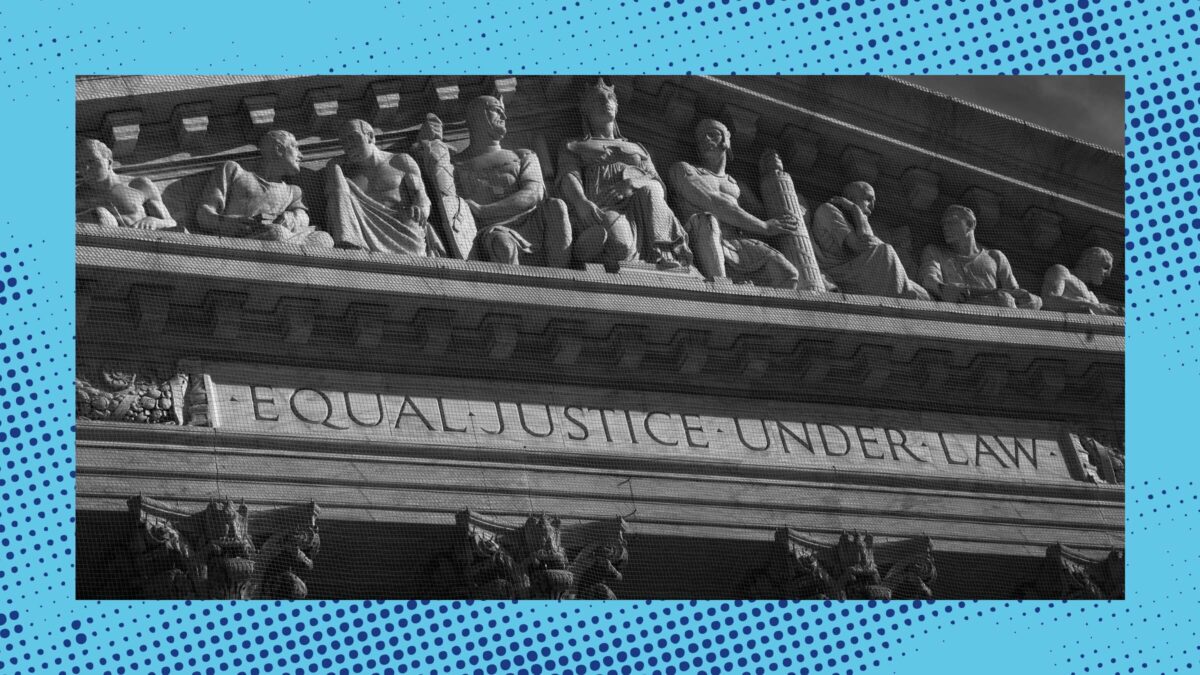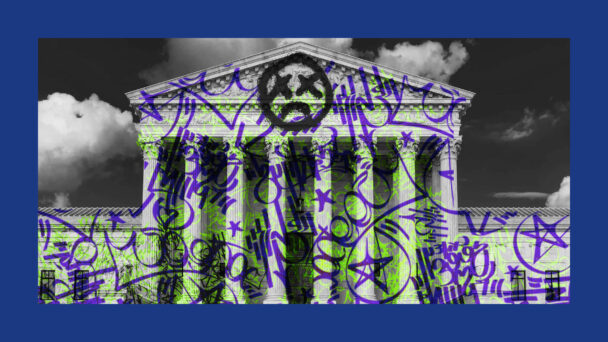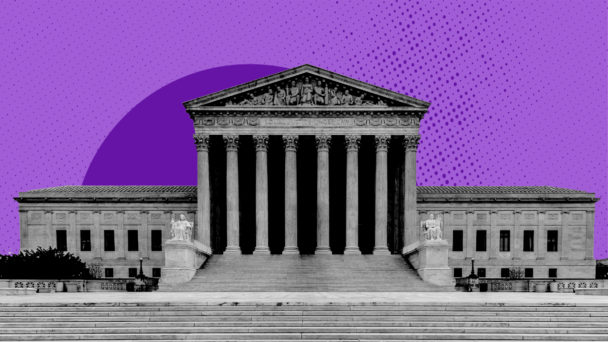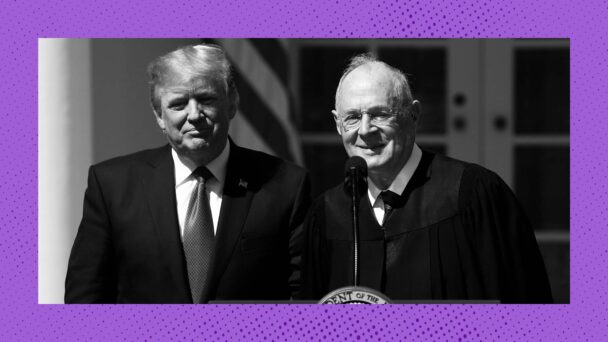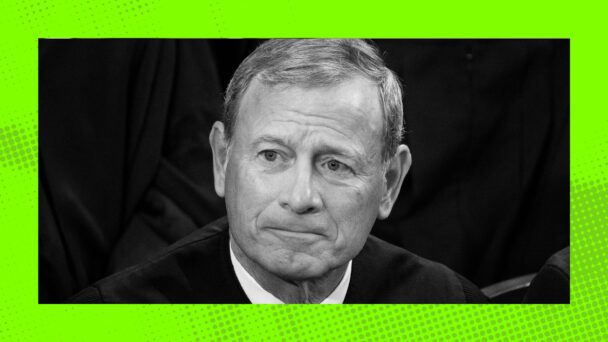In the early hours of September 30, nearly 300 masked ICE agents descended upon an apartment complex in the South Shore neighborhood of Chicago, pouring out of the backs of U-Haul vans on the street and from a Black Hawk helicopter on the roof. With weapons drawn, they broke down doors, dragged semi-dressed residents outside, and zip-tied children together, separating many of them from their parents. Of the hundreds of residents ICE terrorized that night, agents arrested just 37, including four children. Camera crews recorded the agents’ every move, which were later stitched together for a sizzle reel on X, because in this administration, content is king.
You might think that innocent people forced to sit through a long, cold night and then clean up their ransacked homes the next day could sue to get some kind of compensation. Thanks to the U.S. Supreme Court, you would probably be wrong.
Until recently, a 1971 case called Bivens v. Six Unknown Named Agents provided an avenue for ordinary people to seek redress against federal officers who violated their constitutional rights. In Bivens, federal drug enforcement agents entered Webster Bivens’s home without a warrant, handcuffed him, and threatened to arrest his entire family. The Court allowed his lawsuit against the agents to go forward, reasoning that for constitutional rights to mean anything, there must be a legal remedy for clear violations of those rights.
“Power, once granted, does not disappear like a magic gift when it is wrongfully used,” wrote Justice William Brennan. “An agent acting—albeit unconstitutionally—in the name of the United States possesses a far greater capacity for harm than an individual.”
But these lawsuits, which became known as Bivens actions, were too much for the conservatives on the Court. In a series of recent decisions—Ziglar v. Abbasi (2017), Hernández v. Mesa (2020), and Egbert v. Boule (2022)—the Court has taken a sledgehammer to Bivens, replacing an already-narrow path to justice with a Kafkaesque maze of exceptions, carveouts, and outright fictions. Time and again, the justices have explained that although it is unfortunate when federal agents beat you, arrest you without cause, or shoot your child to death, it would be even more unfortunate if courts were allowed to do anything about it.
Ziglar arose in the aftermath of the September 11 attacks, when the federal government detained hundreds of Muslims as “persons of interest,” confining them to tiny cells for 23 hours per day with no access to basic hygiene items like soap or toothbrushes. During the brief periods they were allowed out of their cells, they were subjected to constant abuse from guards, who slammed them into walls, broke bones in their arms, wrists, and fingers, mocked their religious beliefs, and subjected them to humiliating sexual comments.
But when the detainees’ case reached the Supreme Court, Justice Anthony Kennedy, in an opinion joined by Chief Justice John Roberts and Justices Clarence Thomas and Samuel Alito, decided that they could not sue for damages. The opinion asserted that courts should be skeptical of extending Bivens to “new contexts,” which Kennedy defined broadly to mean cases that are “different in a meaningful way from previous Bivens cases decided by this Court.” Basically, the opinion froze Bivens in time, limiting the availability of Bivens actions to specific situations the Court had already considered: Under Ziglar, if government agents break into your home without a warrant and cuff you in front of your family, you might have a case, but if government agents get creative and turn your incarceration into something akin to torture, you do not.
In Hernández, the Court made clear how strictly it would enforce this rule, no matter how egregious the government misconduct at issue. That case was about a Border Patrol officer who alleged that two Mexican children crossed the U.S.-Mexico border and threw rocks at him. The officer arrested one of the children, but the other retreated back across the border; while the child stood in Mexico, the officer fired two shots, killing him.
The family of the slain boy filed a Bivens action against the officer. But the Court, in an opinion written by Alito and joined by Roberts, Thomas, Neil Gorsuch, and Brett Kavanaugh, held that because the facts would extend Bivens to a new context—the shooting death of a child by a federal agent, with uncertain implications for a fraught relationship with a foreign nation—the case could not proceed. In a concurrence, Thomas and Gorsuch went one step further and called for the Court to overturn Bivens entirely.
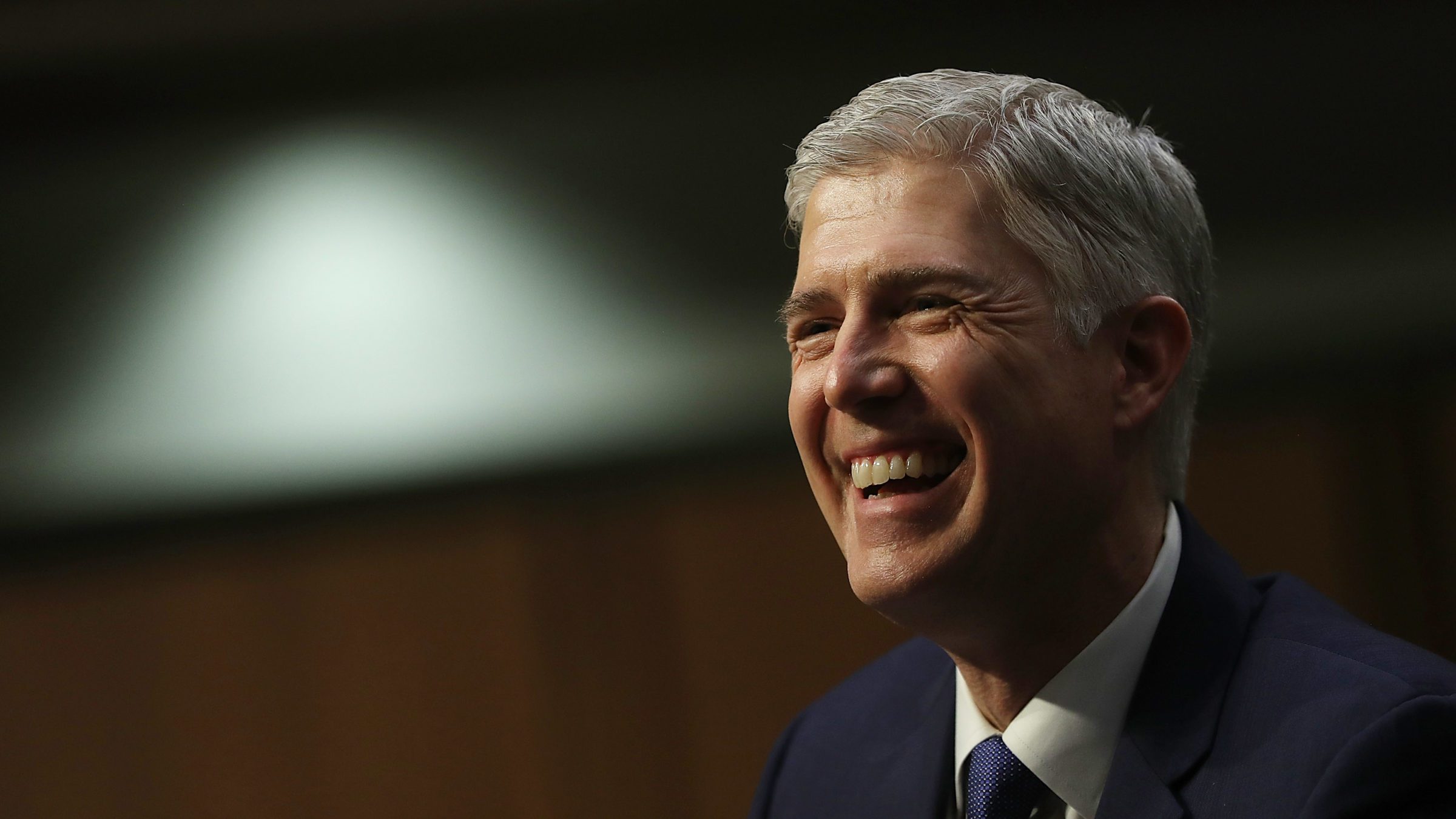
(Photo by Justin Sullivan/Getty Images)
Finally, in Egbert, the Court combined the “new context” framework of Ziglar and the paper-thin foreign relations concerns of Hernández to disallow Bivens actions even in scenarios that look a lot like the one the Court considered in Bivens five decades earlier. In Egbert, a Border Patrol agent boxed in a car at an inn on the U.S.-Canada border. When the inn’s owner, Robert Boule, asked the agent to leave, the agent grabbed him by the chest, lifted him in the air, slammed him into the vehicle, and threw him to the ground. After Boule lodged a complaint, the agent started a retaliation campaign to have Boule investigated by federal and state agencies.
Boule filed a Bivens action against the agent, alleging violations of his First and Fourth Amendment rights. Although the Court unanimously rejected the First Amendment claim, the clear parallels to Bivens—a rank-and-file officer trespassing on private property and using excessive force—required the right-wing majority to get creative about rejecting Boule’s Fourth Amendment claim.
In the opinion, authored by Thomas and joined by Roberts, Alito, Gorsuch, Kavanaugh, and Amy Coney Barrett, the Court summarized existing law by asserting that, as a general rule, Bivens claims should not proceed if courts have “any reason to think that Congress might be better equipped to create a damages remedy.” In Egbert, because the agent said he was involved in investigating activity at the border, the Court decided that, as in Hernández, Congress is best equipped to deal with foreign relations, and courts had to stay out of it. As in Hernández, Gorsuch concurred to say that Bivens should be overturned altogether.
The Court’s decision to hollow out Bivens doesn’t just fail to protect people from government violence—it encourages more violence. Taken together, these cases mean that the ICE agents who are now storming apartment buildings and Home Depot parking lots are operating in a legal gray area, confident that whatever they do, courts will probably never hold them liable for it. The justices have created the perfect environment for abuse: an unaccountable paramilitary force with sweeping powers and no meaningful legal check on how they use them. You don’t need a law degree to know how that ends.
So if you’re wondering why no one has sued over what happened in Chicago, or over any of the other blatant constitutional violations that are getting captured on video and posted to social media every day, the answer is simple: The Supreme Court has functionally legalized these tramplings of constitutional rights, prioritizing the comfort of government agents over the rights of the people they terrorize.
